When I interviewed Ping CEO John Solheim in the Gold Putter Vault I asked him which product that he had been directly involved in was his equivalent of the successful Anser putter that his father had created.
He went for the stand mechanism on the Ping Hoofer bag, which took me by surprise as I was expecting him to answer with a club rather than something used to carry them.

The pop-out leg mechanism he invented became the standard for golf bags in the 1990's for functionality and light weight and that continues today in the Ping Hoofer 14 golf bag that comes with a wider 24 inch leg span.
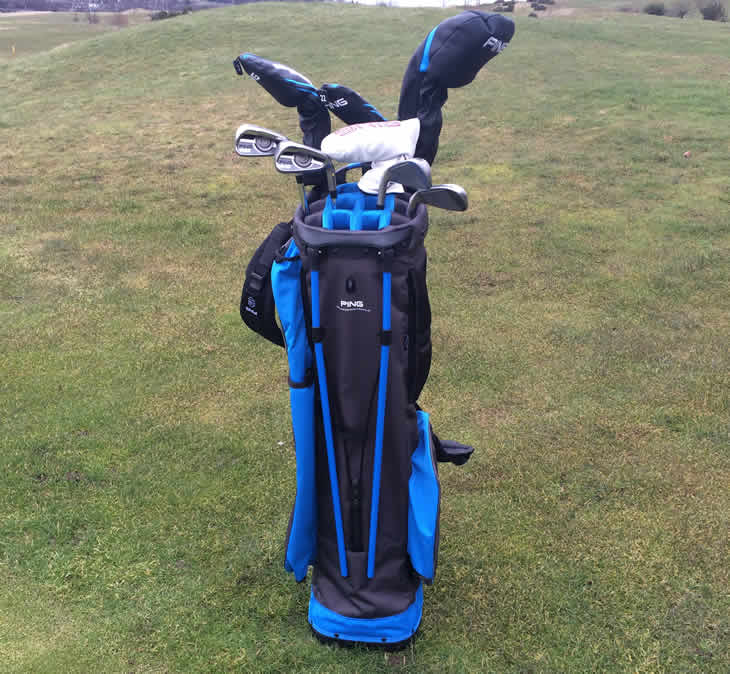
The Hoofer base is smaller these days, but still retains the cambered design that is just as home standing vertically as being angled when the legs are out and is one of the reasons Ping stand bags are the most stable around.
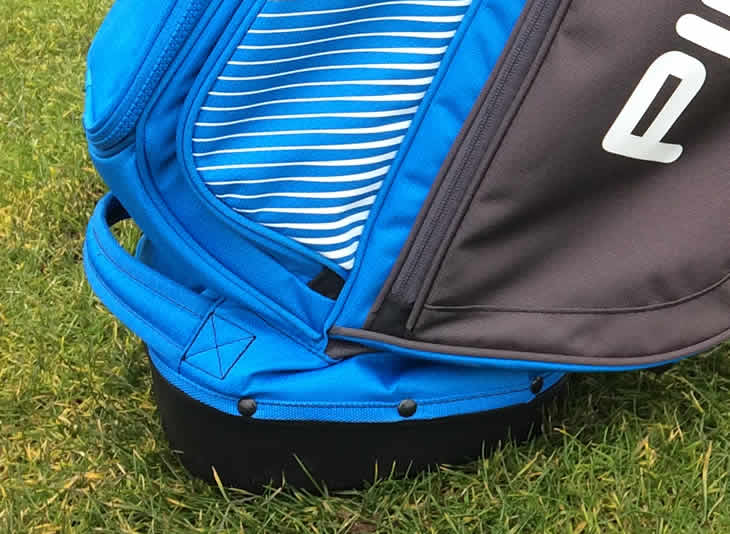
The Hoofer 14 bag features a 14 way divider, hence the name, weighs around 2.5kg (5.5lbs) and has 12 pockets of varying sizes.
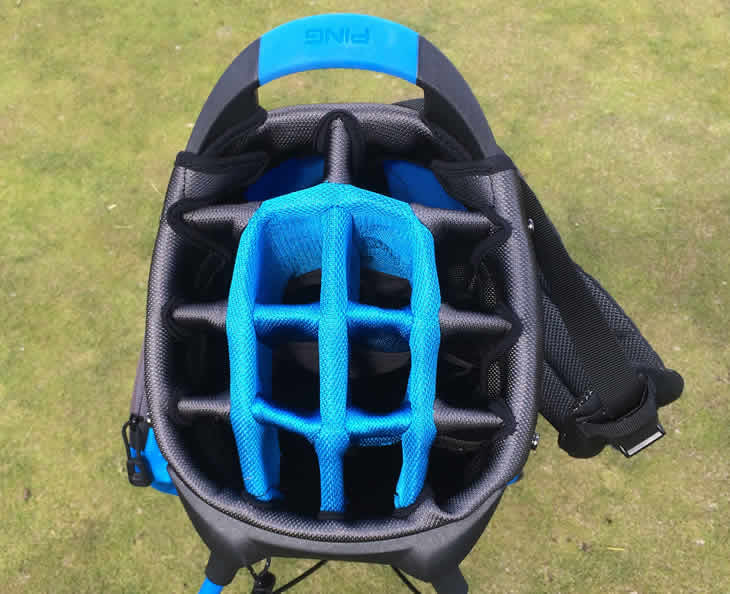
Looking around the bag for the first time was like finding presents under the tree as you kept finding clever little pockets and features all over the bag. The main pockets down the side and on towards the bottom are roomy with light and easy to use zippers.

Within the 3 black pockets on the outside of the 'Birdie Blue' bag shown, there are clips and pouches for secure keys, phones and other such items that you will be in big trouble for losing.
There is an insulated water bottle pouch, which is a great idea for ensuring any condensation does not pass from the bottle to your bag and it is within really easy reach when the bag is on your shoulders.
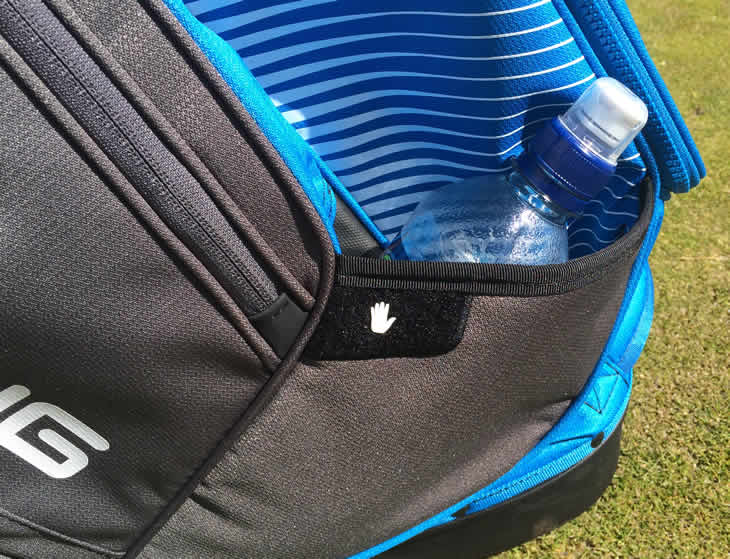
The last pocket I found was for the rain hood, which is under the hip pad on the side. As well as providing extra padding when folded in, the hood is attached by an elasticised cord emanating from the pocket so you will never lose it.
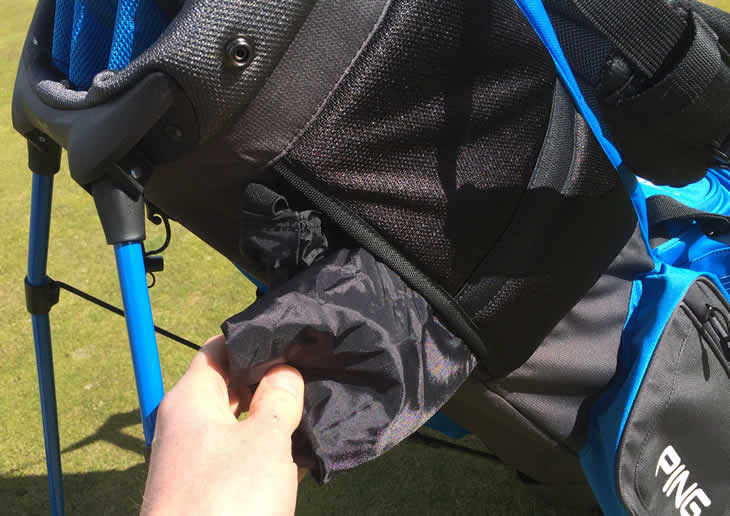
It does make putting on the hood a bit of an effort as you have to do it correctly by fully unzipping the cover so you can fit it over the driver and other clubs in your bag before connecting to the four poppers and then attaching the elasticted loop to the front of the bag.
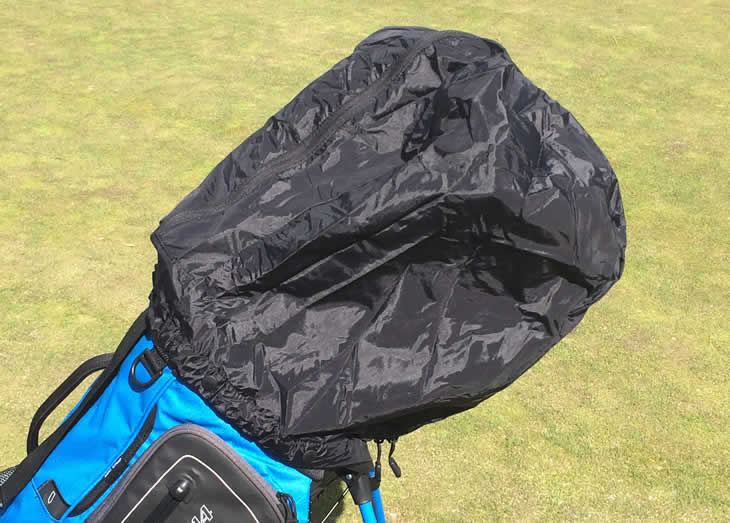
Ping Hoofer hoods always seem a bit quirky and this is no different, but they are not alone in struggling to get a lightweight hood right for a carry bag. The material on this one is pretty thin so I doubt it will keep out much water from a heavy rainstorm, so maybe its default hip padding position is more its strength.
Whilst I am on wet weather features, the umbrella slips into a sleeve under the outside black pocket. It's longer than most and you can get away without putting the umbrella through the fiddly tie cord first which makes access a lot easier.

The Hoofer 14 is a light bag to carry as stand bags go and this is helped by Ping's excellent shoulder pads which are made of Sensor Cool Technology to wick away any human moisture.
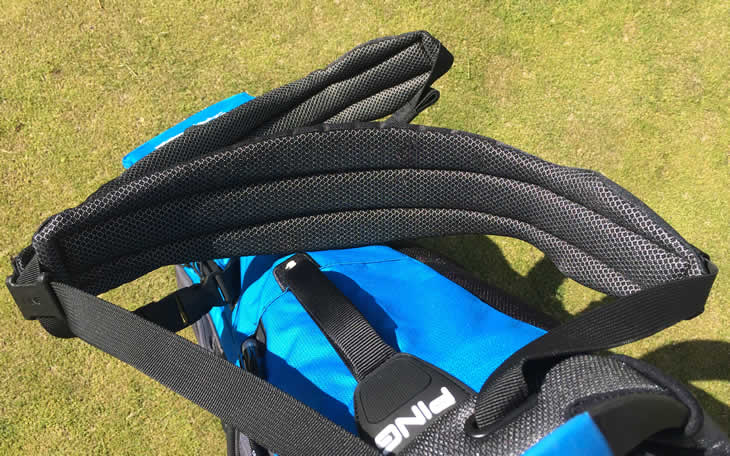
The double straps are fully adjustable to ensure the bag is high enough up in the small of your back to carry properly and can be unclipped if you prefer to use a single strap bag.

You can use the two clips on the front of the straps to adjust it which is clever mechanism. Apparently the straps can be configured to use the bag with a single strap, but as usual it looks like it will take some thought and strap origami to do this.
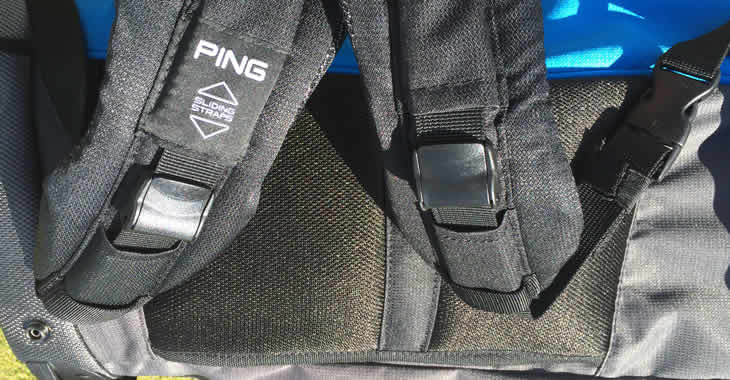
Ping does all of this detail very well, but it is all the small touches that got me excited about the Hoofer 14. Like the sleeve behind the top pocket to put the cart strap through if you are using the bag on a buggy or trolley.

There are also features that are simple and effective like the pen slot and the Velcro pad below the handle and on the outside of the bottle sleeve for attaching your glove to air when you are not wearing it.
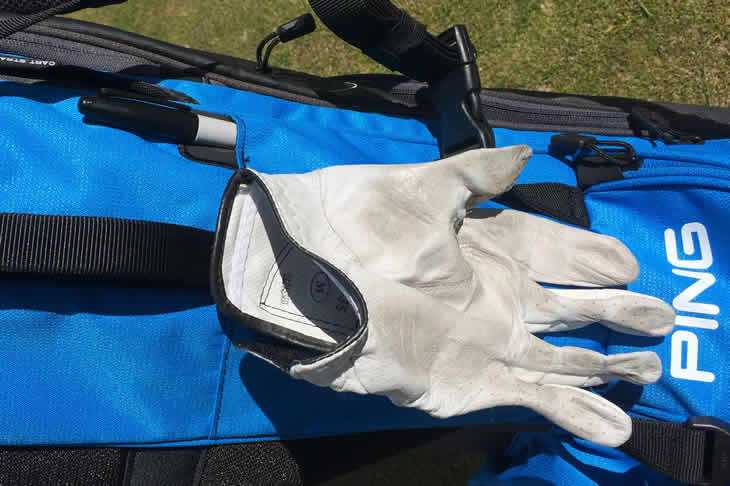
Overall the Ping Hoofer 14 is still one of the best stand bags in the market. It is well made with easy to use pockets, comfortable straps and a host of clever details that continue to lift the Hoofer legacy created by John Solheim nearly 25 years ago.